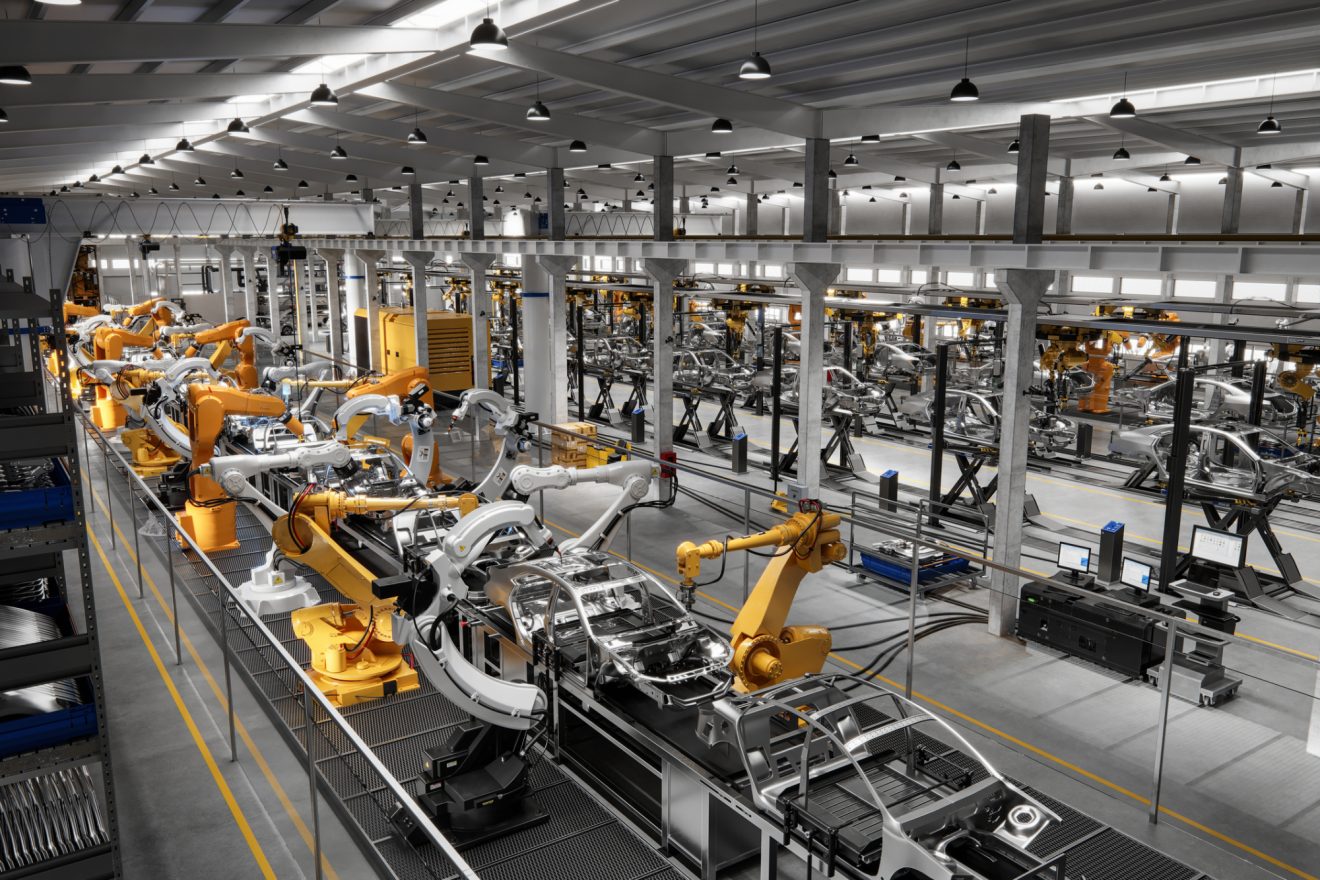
New regulations pile on the pressure for manufacturers, demanding meticulous EHS records. But manual processes for compliance and reporting are slow and unreliable. This inefficiency hinders the real goals: optimizing production and keeping workers safe.
At our recent Empower 2024 conference, we engaged with industry experts to delve into these challenges and explore how modern technology is empowering manufacturers to overcome them.
Panelists Jeremy Myer from NSK Corporation, Gary Mintchell of "The Manufacturing Connection," and David Bradley from UNIPRES North America provided valuable insights on removing data silos and enhancing operational efficiency. Their perspectives highlighted the pivotal role innovation plays in addressing current challenges and how it’s helping to shape the future of manufacturing. Here are some key takeaways from their discussions and insights.
Understanding the Modern Challenges in Manufacturing
Managing shop floor operations presents significant challenges that directly impact efficiency and productivity. One major issue is data silos. Traditional systems often isolate information within departments or specific software, making it hard to access and use in real-time. This separation delays decision-making and hampers overall operational effectiveness.
Jeremy Myer, with over 26 years at NSK Corporation, highlights this issue, noting "data fragmentation on the shop floor leads to delays in decision-making and increases operational costs."
Manufacturing teams often use “Gray Work,” or the slow, manual ways we get work done (spreadsheets, emails, word documents, handwritten notes, etc.), while trying to connect these siloed processes.
Moreover, manual data entry and outdated tracking methods contribute to inefficiencies. In fact, Quickbase found that a staggering 67% of workers spend 10-20 hours per week chasing down data in disparate systems, highlighting the prevalence of manual processes. This not only hampers production efficiency but also increases the likelihood of errors and discrepancies in data.
Recent Trends and Challenges in Shop Floor Management
The adoption of Internet of Things (IoT) devices and increased automation have added layers of complexity to shop floor management. While these technologies offer opportunities for enhanced connectivity and data collection, they also pose challenges in terms of integration and compatibility with existing systems. A recent report from Quickbase found 9 in 10 respondents are overwhelmed by the volume of tools they use in their tech stack, making integration a significant hurdle.
On top of that, the demand for real-time insights and predictive analytics has surged, necessitating advanced solutions capable of processing and analyzing large volumes of data quickly. Manufacturers require agile systems that can adapt to changing production demands and regulatory requirements without disrupting operations.
Custom Solutions for a Dynamic Work Management
Technology is revolutionizing manufacturing by improving efficiency, reducing costs, and driving innovation. IoT enables real-time monitoring, big data analytics optimizes production, cloud computing enhances collaboration, and low-code platforms streamline application development. Digital twins simulate scenarios to optimize processes and predict outcomes, boosting operational efficiency.
The ability to create custom solutions is a gamechanger for manufacturers. Imagine a production floor that reflects your unique needs, not a generic software package. Traditionally, tackling specific challenges often meant relying on IT departments or external developers, leading to delays and compromises.
Dynamic Work Management platforms that leverage low-code/no-code platforms are empowering manufacturers to take control. These platforms allow you to build custom applications yourself, without needing a team of programmers. Those closest to the production line can build applications for real-time production monitoring, streamlined inventory management, or automated scheduling – all within approved IT guardrails.
Custom application building can lead to a whole new approach to building the tools you need to succeed. Let's explore how this shift empowers manufacturers and unlocks a new level of efficiency.
- Real-time Production Monitoring: Build customized dashboards and reporting tools that provide real-time insights into production metrics such as cycle times, defect rates, and machine utilization. This visibility enables proactive decision-making and quick adjustments to production schedules.
- Automated Inventory Management: With Quickbase, manufacturers can automate inventory tracking and management processes. The platform facilitates real-time monitoring of material movements, maintains optimal stock levels, and triggers alerts for low inventory or supply chain disruptions. This automation reduces stockouts and minimizes production delays.
- Integrated Scheduling Solutions: Create sophisticated scheduling applications that optimize resource allocation and production sequencing. Quickbase helps you enhance Overall Equipment Effectiveness (OEE) and maximizes production output by automating scheduling tasks and integrating predictive analytics for demand forecasting and machine availability.
- Pre-built Applications for Quick Deployment: Sometimes companies need instant solutions that don't require extensive effort on their part. This is where Quickbase’s pre-built apps come into play. These applications, such as the EHS App series, simplify the adoption process and enable manufacturers to quickly implement solutions tailored to their specific needs.
Real-World Impact: Transparency, Agility, and Efficiency
The benefits of Dynamic Work Management extend far beyond ease of use. Companies like NSK Corporation have experienced significant improvements in operational transparency and agility.
"Quickbase has transformed the way we monitor production workflows," says Jeremy Myer of NSK. "We can now see everything in real-time, allowing us to optimize resource allocation and react to changes instantly."
The Dynamic Work Management platform streamlines workflows and minimizes production downtime by automating repetitive tasks like inventory management and scheduling. This operational efficiency translates into improved OEE and enhanced overall productivity.
Strategies to Streamline Shop Floor Operations in a Modern World
Today's market demands peak efficiency and razor-sharp agility. To stay ahead, you need to streamline your shop floor operations, transforming it from a siloed environment into a data-driven hub of productivity. Here are some key recommendations to get you started:
- Identify Your Bottlenecks: The first step is a deep dive into your current processes. Where are the bottlenecks? Are communication gaps causing delays? Is manual data entry slowing everything down? Pinpoint the areas that are hindering your efficiency and prioritize them for improvement.
- Embrace the Power of Data: Data is the lifeblood of modern manufacturing. Consolidate information from all sources – production metrics, inventory levels, and equipment performance. By centralizing this data, you gain real-time visibility, allowing for informed decision-making and proactive problem-solving.
- Invest in User-Friendly Technology:Consider implementing a user-friendly platform that allows for customization and automation. This could involve building bespoke applications for specific needs, such as automated work order generation or paperless quality control checklists. Remember, the key is to empower your workforce, not create additional hurdles.
- Foster Collaboration (IT & Operations): Break down the silos! Foster a strong partnership between your IT and operations teams. This collaborative effort ensures data security, seamless integration with existing systems, and ongoing support for any new technologies implemented.
- Continuous Improvement is Key: Don't settle for "good enough." Embrace a culture of continuous improvement. Leverage data analytics to identify trends and optimize processes. Encourage feedback from shop floor personnel – they are the ones experiencing the challenges firsthand. By constantly refining your approach, you can ensure your shop floor remains efficient and adaptable.
Looking Ahead
The future of manufacturing is all about efficiency and agility.
Manufacturers can transform their shop floors into data-driven hubs of productivity by breaking down data silos, implementing user-friendly technology, and fostering a culture of continuous improvement.
Adopting these modern solutions enhances operational efficiency and facilitates agile responses to market changes, ensuring sustained growth and competitive advantage.
For more insights on how industry leaders are navigating these transformations, explore the strategies shared at our Empower 2024 conference and discover how innovative solutions are reshaping the future of manufacturing.




